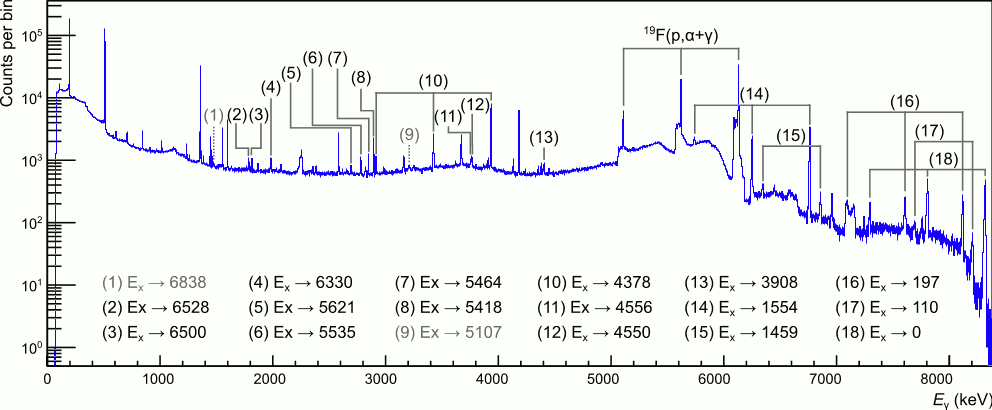The relative abundance of 18O/16O in pre-solar grains and in stellar atmospheres strongly depends on the relative strengths of the reactions 18O(p,α)15N and 18O(p,γ)19F. The (p,α) channel has been studied in a series of recent measurements, including low-energy measurements at LUNA, but knowledge of the (p,γ) cross section at astrophysically relevant energies largely relied on a single detailed study by Wiescher et al., published in 1980.

In a previously published work at LUNA, the disputed influence of a resonance in 18O(p,γ)19F at 90 keV had been ruled out. The follow-up work published now studied four narrow resonances (151, 215, 274, and 334 keV proton energy) in more detail, using a High Purity Germanium detector. With the benefit of the underground location at LUNA and a massive lead shielding, new branching ratios of weak transitions were observed for the first time in several of the resonances. The resonance strengths of the detailed measurements by Wiescher et al. were confirmed, and with this result the measurements exclude a non-standard scenario for the fluorine nucleosynthesis and a nuclear physics solution for the 18O depletion observed in Group 2 oxygen-rich stardust grains.
The article is published in Physical Review C 104, 025802.

